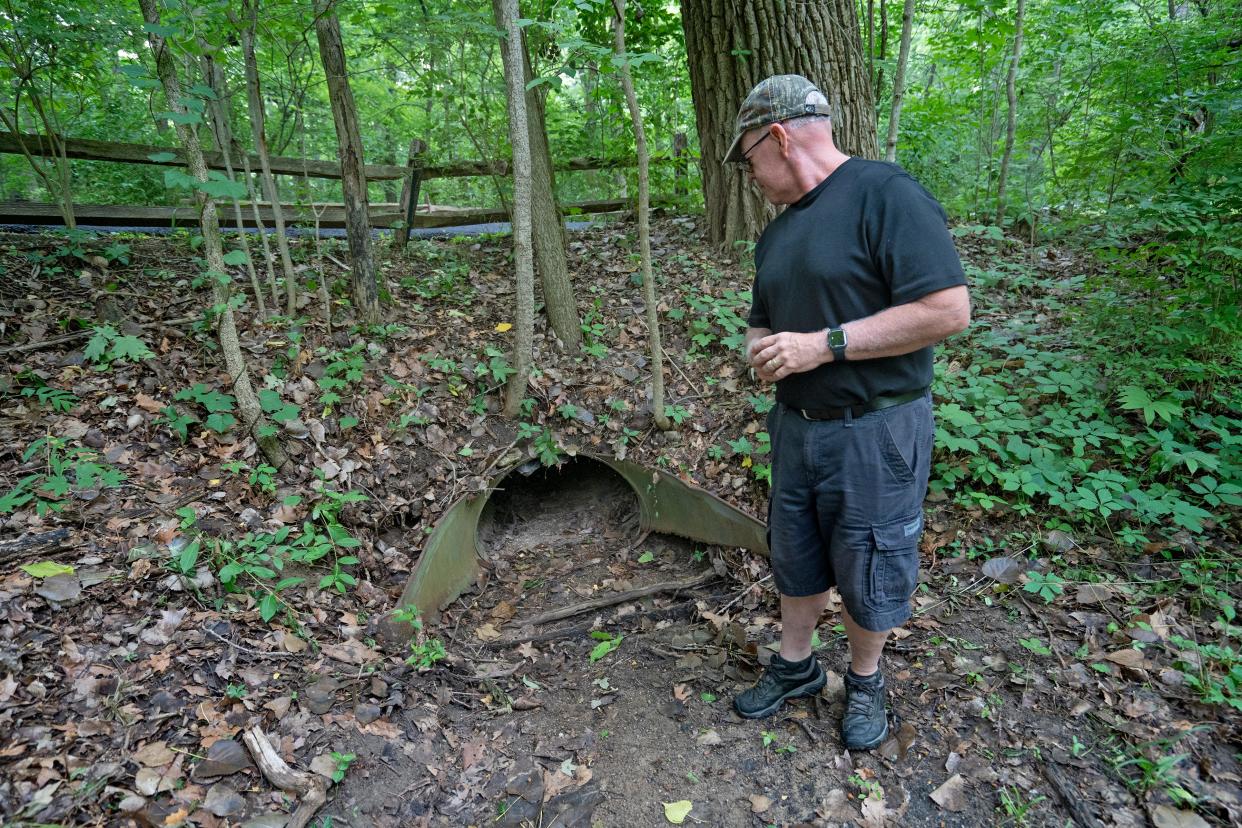Impact fees are the solution to halt the destruction of urban forests, green spaces

Recent controversy over the proposed development that would have destroyed 200 acres of Eagle Creek forest and open space in Pike Township has highlighted the need to balance preservation of natural areas and development in our growing city.
Last fall, a similar situation threatened the Buck Creek forest corridor in Franklin Township. Both petitions to rezone focused on areas identified in the City’s Comprehensive Master Plan as “environmentally sensitive” or “valuable as a potential area for growth of city parks or recreational space,” yet the Metropolitan Development Commission approved these projects, despite their clear violation of the intent of the plan.
In both cases, the developers eventually withdrew their petitions after facing organized community outcry and coordinated public remonstrance paired with legal filings and lawsuits levied against developers at the expense of neighboring landowners. While many are celebrating these temporary wins, we at the Indiana Forest Alliance recognize that it is not sustainable to fight these rezoning petitions on a case by case basis alone. We must take action, now, to protect our city’s remaining natural spaces.
Urban forests are vital to the fight against climate change. Their profound impacts on urban ecosystems are often underestimated.
In Indiana Forest Alliance’s 2021 study, the Forests for Indy: Urban Forest Protection Strategy, we found that Indianapolis’ forests provide more than $257 million worth of ecosystem services every year.
Forest trees have the power to sequester carbon emissions and provide a natural buffer against the mounting threats of extreme weather events and flooding. Urban forests also enhance air quality, lower temperatures through natural air conditioning and create a sense of community that is essential for a thriving, interconnected city. After a summer characterized by extremely poor air quality due to forest fires in Canada, it is clear that climate change is happening, and the health and public safety issues of climate change must be addressed today, not tomorrow.
The reason Indianapolis has a Comprehensive Master Plan is to guide land use practices in Marion County and inform zoning decisions. Failure to uphold the integrity of the plan not only puts large, heritage trees, forests, wetlands and wildlife at risk, it also disenfranchises Indianapolis residents, ignoring the voice of the people from the zoning process.
Implementation of the Full Circle Greenways Plan, for example, would provide Indianapolis with a loop of connected greenways, trails, paths and non-motorized traffic lanes encircling our Circle City in natural open spaces. But, this noble vision teeters on the brink of imminent failure with every rezone request in these forests and open spaces.
The most important thing we can do to save forests is to purchase them to create parks and other protected green spaces. Yet land acquisition is nowhere to be found in this year’s $1.5 billion city budget approved recently by a unanimous vote of the City-County Council. This budget does not even include the $250,000 dollars IFA has long requested to conduct an initial feasibility study of impact fees, a proven solution that could put implementation of the Greenways Plan within our grasp.
State Law (Indiana Code 36-7-4-1300) allows growing municipalities to assess impact fees for infrastructure including recreation needs based on projected growth patterns. Recreation impact fees allow part of the cost of new and expanded park/recreation facilities to be shifted from the community at large to the new developments that are generating the need for new and expanded facilities. Indianapolis is surrounded by cities and towns that use recreation impact fees, such as Carmel, Greenwood, Zionsville and more.
Indianapolis’ per capita spending on parks lags far behind other U.S. cities. Many other cities not only use property tax revenue, but also sales tax, utility fees and wastewater fees to fund conservation of forested infrastructure. Some use revolving loan funds, city bonds, tree protection funds and memorial tree funds as well as public private partnerships to support urban forest protection. All of these are options for Indianapolis, too.
The time has come for our city to uphold the Comprehensive Plan, and implement a forward-thinking climate action plan that nurtures the well-being of its residents and prioritizes the preservation of the dwindling natural spaces we share. By aligning our values with the long-term preservation of green spaces, we not only safeguard our city but also invest in the health and vitality of our communities for generations to come.
Indianapolis stands at a crossroads. We must maintain a balance of growing the infrastructure of an urban hub and conserving the green infrastructure that will enable Indianapolis to be a sustainable and livable city in the face of climate change. We can preserve key forest tracts for parks and the ecosystem services they provide. But we have to find the will to find a way to save these green spaces today through impact fees or other funding sources.
Lori Perdue is an environmental activist with over 15 years of community organizing experience. She currently serves as the Forests For Indy Campaign Director for the Indiana Forest Alliance.
This article originally appeared on Indianapolis Star: Op/Ed: Here's why impact fees will save Indianapolis green spaces
